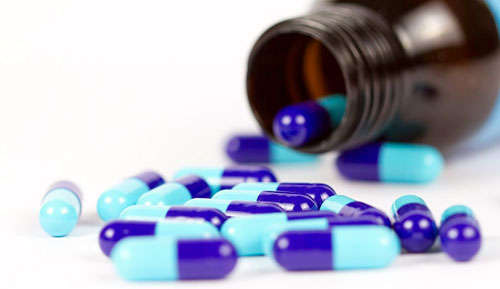
A study published the journal Nature earlier this month, describes the discovery of a new antibiotic, teixobactin.
The discovery of well-known antibiotics penicillin and streptomycin in the 1940s revolutionised medicine, heralding the beginning of the ‘golden era’ of antibiotics. Throughout the 1950s and 1960s there was an explosion of antibiotic discoveries, leading to the development of more than 150 new types of antibiotics. Yet with the last discovery almost 30 years ago now, and with antimicrobial resistance increasing at an unprecedented rate, there is an urgent medical need for new antibiotics. This ‘drug-discovery-drought’, however, may well be over, as US researchers from the Northeastern University in Boston, Massachusetts, have discovered a new class of antibiotic which may be set to revolutionise medicine all over again.
Like all other major antibiotics discovered in the 1950s and 1960s, this antibiotic is sourced from soil-dwelling micro-organisms. Most antibiotics currently used were discovered by screening soil microorganisms for natural products which they produce to defend themselves against competing microbes in their surrounding environment. However, the ‘over-mining’ of this technology brought the end of the era of antibiotic discovery in the 1960s. Only 1% of microorganisms (from environments such as soil and sea water) can be grown under laboratory conditions, leaving 99 % of microbes undiscovered and an untapped source of new antibiotics.
Professor Kim Lewis and colleagues have found a solution to this problem, utilising a multichannel device known as the iChip. A sample of soil is diluted and poured onto the porous iChip, so that one bacterium will be housed in each pore. Covered with two semi-permeable membranes to allow the diffusion of growth factors and nutrients, the iChip is then buried into the soil. By allowing the bacteria to grow in their natural environment, Professor Kim Lewis and colleagues have significantly improved the growth rates of unculturable bacteria to reach a remarkable 50 % – a huge step up from the 1 % obtained from growing soil microorganisms in a Petri dish. They were able to screen extracts from 10,000 isolated microbes grown in vitro, and one bacteria, which they named Eleftheria terrae, was found to produce the best candidate antibiotic compound, now known as teixobactin.
Teixobactin has been shown to attack cell wall precursors belonging to Gram-positive bacteria only. Gram-positive bacteria are generally more susceptible to antibiotics as they lack the outer membrane known to protect Gram-negative bacteria and make them more resistant to antibiotic drugs. As these cell wall precursors are essential for the Gram-positive bacterial cell wall, Lewis and colleagues argue that it would be difficult for bacteria to evolve resistance teixobactin. Teixobactin proved to be very potent against drug-resistantStaphylococcus aureus strains, and hospital ‘super-bug’ Clostridium difficile in vitro, and was also shown to be highly efficacious in a mouse model of mouse model of methicillin-resistant S. aureus (MRSA). Mice were given a lethal dose of MRSA and following treatment with teixobactin, all animals survived.
It remains to be seen whether this technology signals the end of the antibiotic crisis.
iscience

